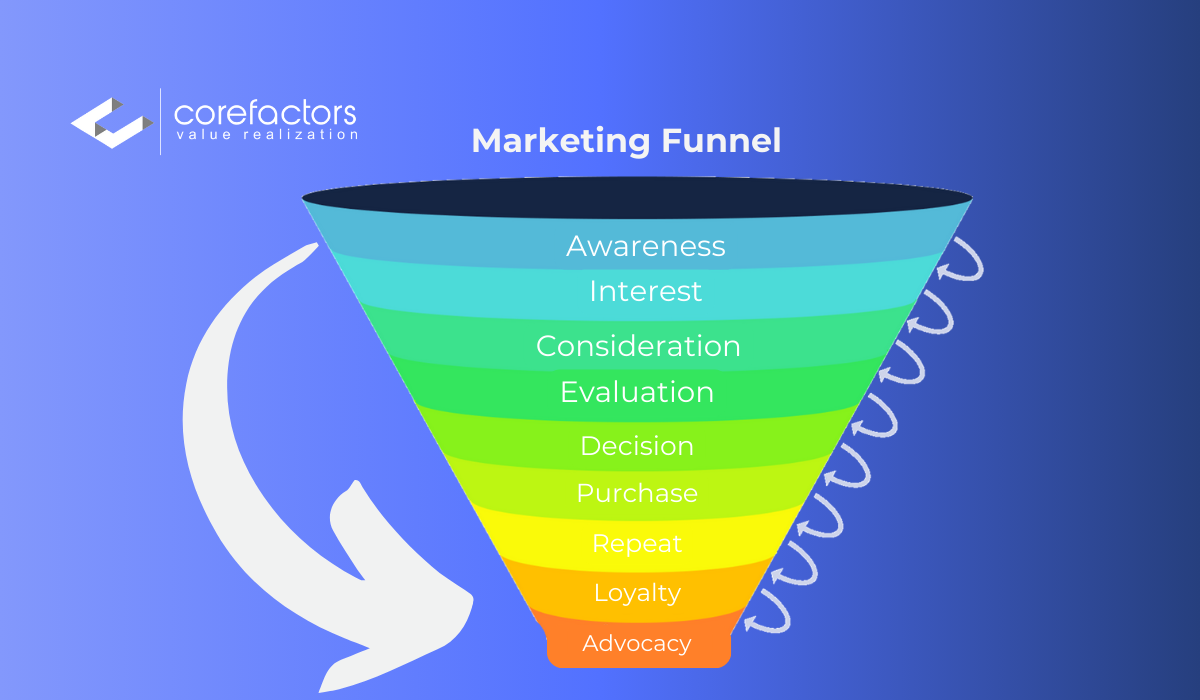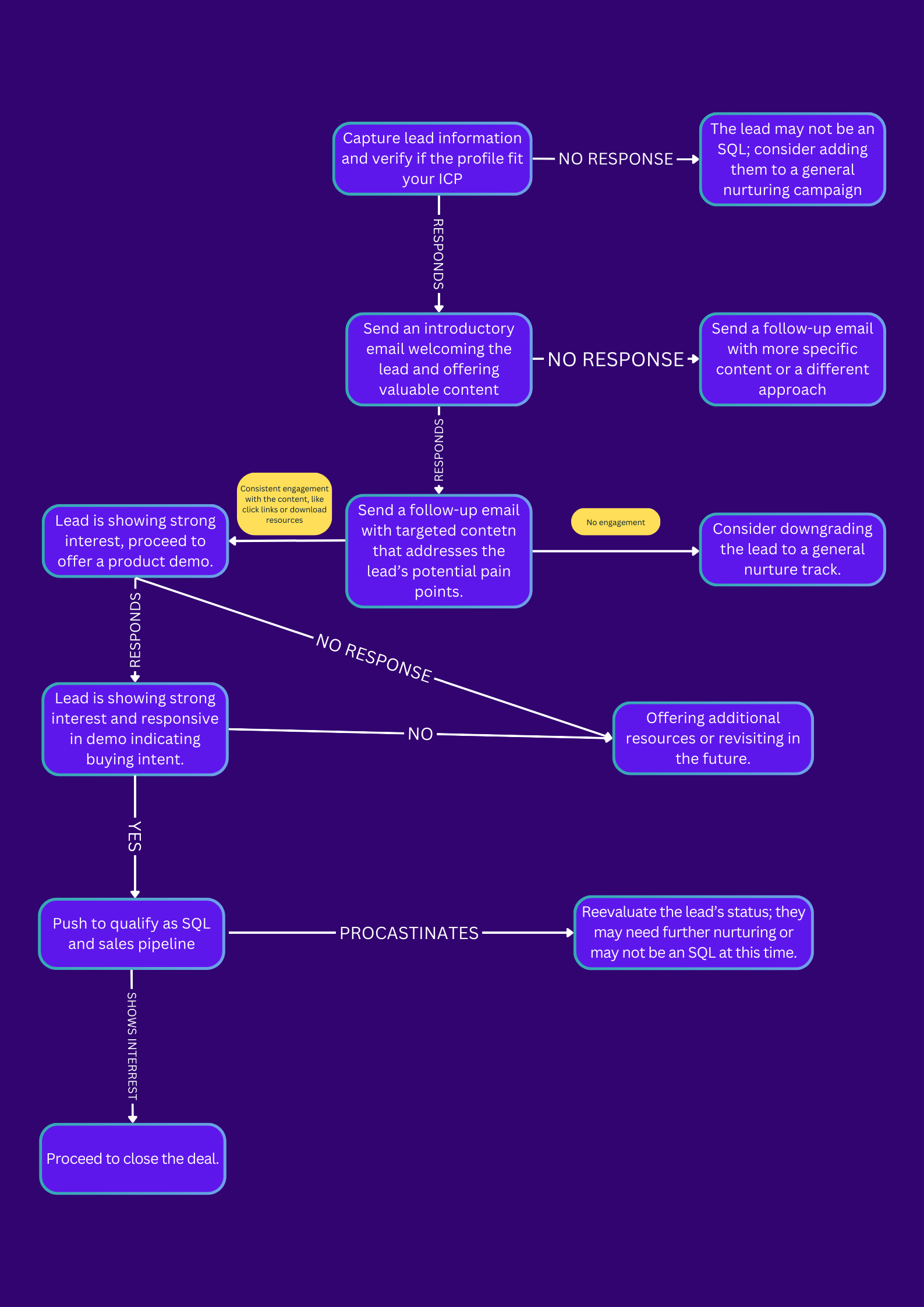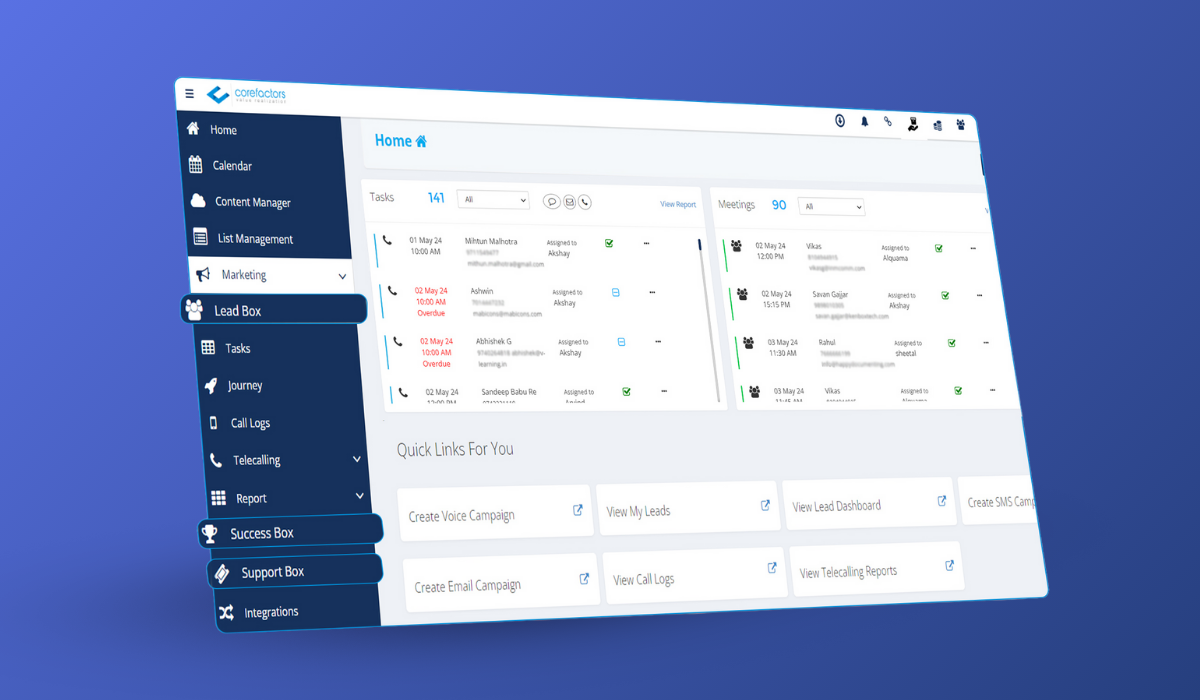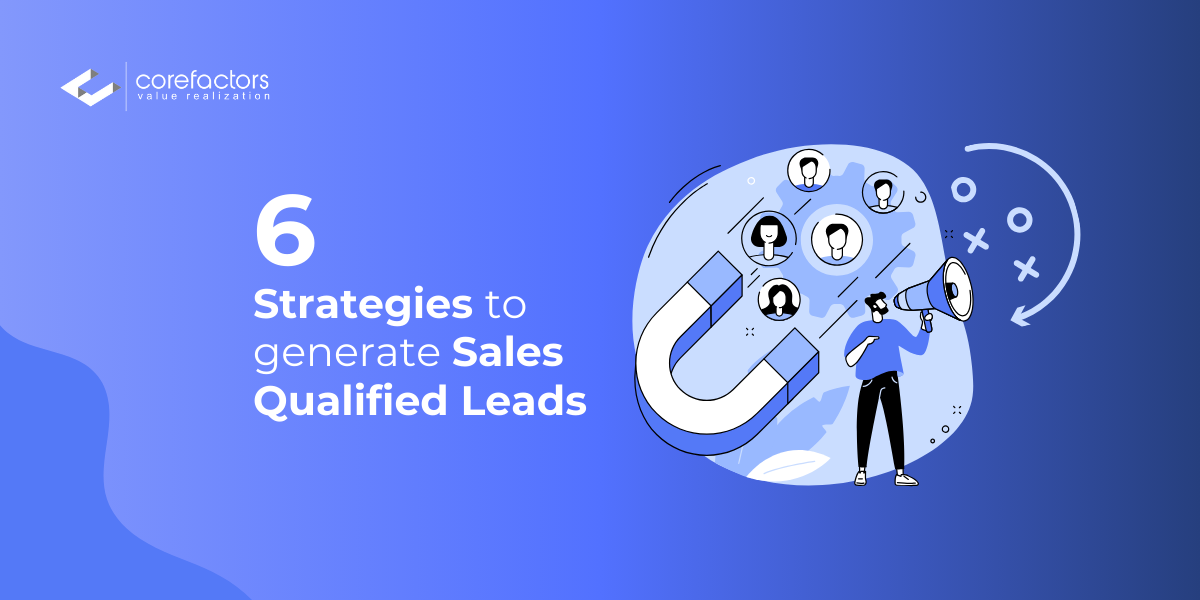What if I told you that your sales pipeline could be brimming with leads, yet only a fraction of them have the potential to drive real revenue?
The truth is, in the race to capture as many leads as possible, many businesses overlook the importance of distinguishing and nurturing Sales Qualified Leads (SQLs). These are those with a genuine propensity to convert into loyal customers. It's easy to be swayed by the allure of a long list of prospects, but the reality is that quality far outweighs quantity in the world of sales.
A lean, well-curated pipeline with high-potential SQLs can dramatically boost your sales outcomes.
In this blog, we'll explore how to identify and generate these valuable leads because that's where your efforts truly matter.
What are Sales Qualified Leads?
In the hierarchy of a sales funnel, Sales Qualified Leads are the golden eggs. They are just above the tip of the sales funnel and are ready for direct engagement with your sales team.

These leads have been thoroughly vetted by your marketing team, often after multiple interactions with your brand and content. They’ve demonstrated a clear intent to purchase, meeting specific criteria that indicate a high likelihood of conversion.
SQLs are the leads most likely to become customers, making them the primary focus for your sales team.
Understanding the Difference: SQLs vs MQLs
One of the foundational elements in lead generation is understanding the distinction between Marketing Qualified Leads (MQLs) and Sales Qualified Leads (SQLs). While both are essential to the sales funnel, they serve different purposes and require different approaches.
Marketing Qualified Leads (MQLs):
MQLs are leads that have engaged with your marketing efforts like downloading a whitepaper, subscribing to a newsletter, or attending a webinar, but may not yet be ready to engage with the sales team. They have shown interest and are in the awareness or consideration stage, needing further nurturing before they can be moved down the funnel.

Sales Qualified Leads (SQLs):
SQLs, on the other hand, are leads that have progressed beyond the initial stages of interest and are now deemed ready for direct sales interaction. These leads have been vetted by the marketing team and meet specific criteria that indicate a higher likelihood of conversion. SQLs have shown intent to purchase, such as requesting a demo or directly contacting your sales team.
For example, when a project manager downloads an eBook on agile working, she becomes an MQL, signaling her interest and exploration of options. As she progresses by attending a webinar and requesting a live demo, she transitions into an SQL, demonstrating a clear intent to purchase. The shift from MQL to SQL happens when her interest evolves into a tangible readiness to buy.
Identifying Sales Qualified Leads
Identifying SQLs is an art and a science. It involves a deep understanding of your ideal customer profile (ICP) and analyzing data points that indicate purchase intent. Here’s where businesses often falter:
- Misunderstanding the Buyer’s Journey: Not all leads are ready to buy, and pushing them too soon can result in lost opportunities. It's essential to recognize where a lead is in their journey and tailor your approach accordingly.
- Relying Solely on Demographics: While demographic data is essential, relying only on it can lead to misidentifying SQLs. Behavioral data, such as how often a lead engages with your content or their interaction with your sales team, is equally important.
- Ignoring Negative Signals: Sometimes, what a lead doesn’t do is just as telling as what they do. Leads that consistently avoid key conversion actions (like booking a demo) might not be ready to move forward, even if they fit your ICP perfectly.
This flowchart ensures that leads are thoroughly evaluated through their journey, with clear decision points that help determine whether they qualify as an SQL or require further nurturing.

Strategies to Generate Sales Qualified Leads
As businesses seek to refine their lead generation efforts, employing strategic approaches can significantly enhance the quality of leads entering the sales funnel. Here are a few effective strategies to generate SQLs that will empower your sales team and boost conversion rates.
1. Leverage Predictive Analytics
Predictive analytics like lead scoring can help you anticipate which leads are most likely to become SQLs by diving into past behaviors, purchase history, and engagement metrics. This approach eliminates the guesswork circus and sharpens your sales team efforts toward leads statistically more likely to generate revenue.
Instead of spreading your resources thin across a broad spectrum of leads, you can zero in on those with the highest potential. Moreover, the insights garnered from this approach allow for a more personalized outreach strategy. When you know what triggers a conversion, you can tailor your interactions in ways that resonate with individual leads, enhancing the chances of success.
To effectively implement predictive analytics for identifying Sales Qualified Leads (SQLs), focus on these key, highly significant metrics:
- Website Interaction Frequency
- Content Engagement (e.g., whitepaper downloads, video views)
- Email Open and Click-Through Rates
- Time Spent on Key Pages (e.g., pricing, product pages)
- Behavioral Triggers (e.g., webinar attendance, demo requests)
- Previous Purchase History
- Lead Scoring based on Past Conversion Patterns
- Lead Source (e.g., organic search, paid ads, referrals)
2. Incorporating Social Listening Into Lead Generation
Integrating social listening into your lead generation strategy goes beyond monitoring online chatter. In this era of fragmented attention and increasingly complex customer journeys, understanding the nuances and strategically embedding your brand within the key industry conversations, allows you to identify prospects actively seeking the solutions you provide.
The real power of social listening is in bridging passive observation with proactive engagement. By tuning into the conversations happening around your brand, competitors, and industry-relevant topics, you aren't just accessing data points, you gain an opportunity to understand the underlying motivations, challenges, and needs of your target audience. This grants access to close the deal precisely at the right moment, when their intent to purchase is clear and their pain points are most acute.
Beyond listening, this aids in responding with intelligence and precision, turning social listening into a powerful tool for driving qualified sales leads and strengthening lead conversions.
3. Account-Based Marketing (ABM) with a Twist: Hyper-Personalization at Scale
Account-Based Marketing (ABM) is a familiar strategy, but the key to unlocking more Sales Qualified Leads (SQLs) lies in implementing hyper-personalization at scale. This is where AI-driven tools and deep data analytics converge to revolutionize how we connect with key decision-makers within target accounts.
While traditional ABM focuses on the organization as a whole, hyper-personalization hones in on each decision-maker's specific behaviors, preferences, and needs. This approach crafts highly customized outreach that resonates with key individuals, moving leads closer to becoming SQLs. By addressing the unique challenges of each decision-maker, hyper-personalization accelerates lead qualification, pre-qualifying SQLs earlier in the sales cycle and increasing conversion likelihood.
For example, when pitching your CRM solution, focus on growth and reduced churn to engage the CEO, while highlighting cost-efficiency and ROI to capture the CFO’s interest. For the VP of Sales, emphasize tools that accelerate deal closures, and for the Head of Customer Success, showcase how the CRM enhances retention through personalized support.
4. Omni-channel Strategies for Accelerating SQL Conversion
Generating Sales Qualified Leads (SQLs) requires a strategic blend of online and offline interactions across multiple touchpoints, such as social media, email, events, calls, and direct mailing. The goal is to create a consistent and cohesive experience that keeps your brand top-of-mind, ensuring leads don’t slip through the cracks and are guided toward conversion.
For instance, a prospect might first encounter your brand through a targeted LinkedIn ad, followed by an email offering a whitepaper that aligns with their interests. Later, they may attend a webinar where they engage with your team and ask specific questions. A few days after the webinar, they receive a personalized direct mail piece thanking them for their participation and offering a discount on their services.
Each interaction reinforces your core message, accelerating the lead’s journey to becoming a sales qualified lead. By maintaining a consistent, relevant presence across channels, you build trust and credibility, creating a seamless experience that naturally leads to conversion.
5. United Sales and Marketing Team
Aligning sales and marketing teams is a powerful strategy to generate more Sales Qualified Leads (SQLs) because it creates a unified approach to identifying, nurturing, and converting leads.
Here's how this alignment becomes a strategy for SQL generation:
- Shared Goals and Metrics: Aligning goals and KPIs ensures both teams work towards the same objectives, focusing marketing efforts on leads that meet sales criteria, thus improving lead quality.
- Enhanced Lead Qualification: Sales feedback helps refine marketing strategies, targeting the right leads with the highest potential to convert.
- Consistent Messaging: Aligned teams deliver consistent messaging across all touchpoints, building trust and ensuring a smooth transition from interest to qualification.
- Optimized Lead Nurturing: Marketing designs nurture campaigns that align with the sales process, delivering the right information at the right time to prepare leads for engagement.
- Data-Driven Decisions: Shared insights and data enable informed decision-making, optimizing resources and focusing efforts on the leads most likely to convert.
By working together, these teams can ensure that leads are not just generated, but are primed for conversion, ultimately leading to higher sales success and better ROI.
6. Integrated Data Ecosystems
Data is revenue. However, data silos can obstruct a clear, holistic view of your leads, hindering the ability to generate Sales Qualified Leads (SQLs) effectively. So by creating a unified data ecosystem by integrating your CRM, marketing automation, and other platforms, you gain a 360-degree view of your leads, enabling more effective SQL generation.

When these systems are seamlessly integrated, your team can track lead interactions with greater accuracy, score leads more precisely, and deliver highly personalized marketing campaigns. This synchronization ensures your team always has access to the most current and relevant data, enhancing the efficiency of your sales qualified leads generation process and significantly increasing the likelihood of converting leads into customers, ultimately driving overall business success.
Grab More Sales Qualified Leads
Generating Sales Qualified Leads is about leveraging the latest strategies to create a cohesive, data-driven approach that aligns with your business goals and connects with your target audience. The key is not in the quantity of leads, but in identifying and nurturing the right ones most likely to convert into loyal customers and drive sustainable growth.
Your journey to increasing SQLs is a continuous process of refinement and adaptation. Grab the right leads as those are that propel your business forward, so prioritize them, nurture them, and watch your sales grow.
Remember, the leads you choose to focus on today are the ones that will shape your success tomorrow.
Frequently Asked Questions (FAQs)
1. What is the difference between a Marketing Qualified Lead (MQL) and a Sales Qualified Lead (SQL)?
An MQL is a lead that has shown interest in your offerings through marketing channels but may not be ready for a sales conversation. An SQL, on the other hand, is a lead that has been vetted and deemed ready for direct engagement with the sales team due to a higher likelihood of conversion.
2. Why is it important to focus on Sales Qualified Leads?
Focusing on SQLs ensures that your sales team is engaging with leads that are most likely to convert, making your sales process more efficient and improving your overall conversion rates. This targeted approach saves time and resources and boosts revenue.
3. What are the common mistakes businesses make when trying to generate SQLs?
Common mistakes include relying solely on demographic data, misaligning sales and marketing efforts, ignoring behavioral data, and failing to use tools like predictive analytics or intent data to qualify leads more accurately.
4. How do I identify a Sales Qualified Lead?
SQLs are identified by their engagement with your content, behaviors indicating purchase intent (like requesting a demo or downloading key resources), and alignment with your Ideal Customer Profile (ICP). Advanced lead scoring models and predictive analytics can also help in this process.








